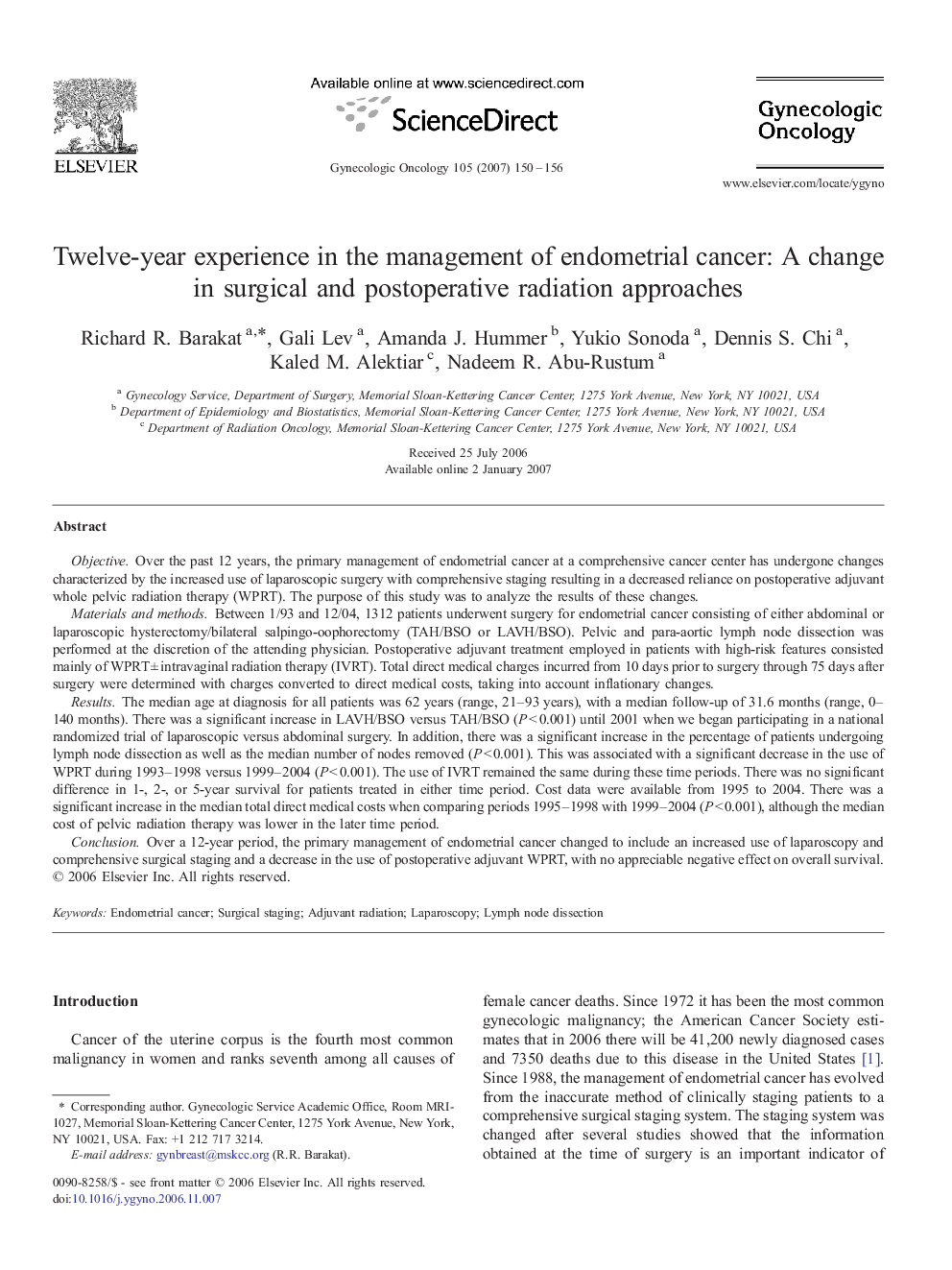| Article ID | Journal | Published Year | Pages | File Type |
|---|---|---|---|---|
| 3944971 | Gynecologic Oncology | 2007 | 7 Pages |
ObjectiveOver the past 12 years, the primary management of endometrial cancer at a comprehensive cancer center has undergone changes characterized by the increased use of laparoscopic surgery with comprehensive staging resulting in a decreased reliance on postoperative adjuvant whole pelvic radiation therapy (WPRT). The purpose of this study was to analyze the results of these changes.Materials and methodsBetween 1/93 and 12/04, 1312 patients underwent surgery for endometrial cancer consisting of either abdominal or laparoscopic hysterectomy/bilateral salpingo-oophorectomy (TAH/BSO or LAVH/BSO). Pelvic and para-aortic lymph node dissection was performed at the discretion of the attending physician. Postoperative adjuvant treatment employed in patients with high-risk features consisted mainly of WPRT ± intravaginal radiation therapy (IVRT). Total direct medical charges incurred from 10 days prior to surgery through 75 days after surgery were determined with charges converted to direct medical costs, taking into account inflationary changes.ResultsThe median age at diagnosis for all patients was 62 years (range, 21–93 years), with a median follow-up of 31.6 months (range, 0–140 months). There was a significant increase in LAVH/BSO versus TAH/BSO (P < 0.001) until 2001 when we began participating in a national randomized trial of laparoscopic versus abdominal surgery. In addition, there was a significant increase in the percentage of patients undergoing lymph node dissection as well as the median number of nodes removed (P < 0.001). This was associated with a significant decrease in the use of WPRT during 1993–1998 versus 1999–2004 (P < 0.001). The use of IVRT remained the same during these time periods. There was no significant difference in 1-, 2-, or 5-year survival for patients treated in either time period. Cost data were available from 1995 to 2004. There was a significant increase in the median total direct medical costs when comparing periods 1995–1998 with 1999–2004 (P < 0.001), although the median cost of pelvic radiation therapy was lower in the later time period.ConclusionOver a 12-year period, the primary management of endometrial cancer changed to include an increased use of laparoscopy and comprehensive surgical staging and a decrease in the use of postoperative adjuvant WPRT, with no appreciable negative effect on overall survival.
